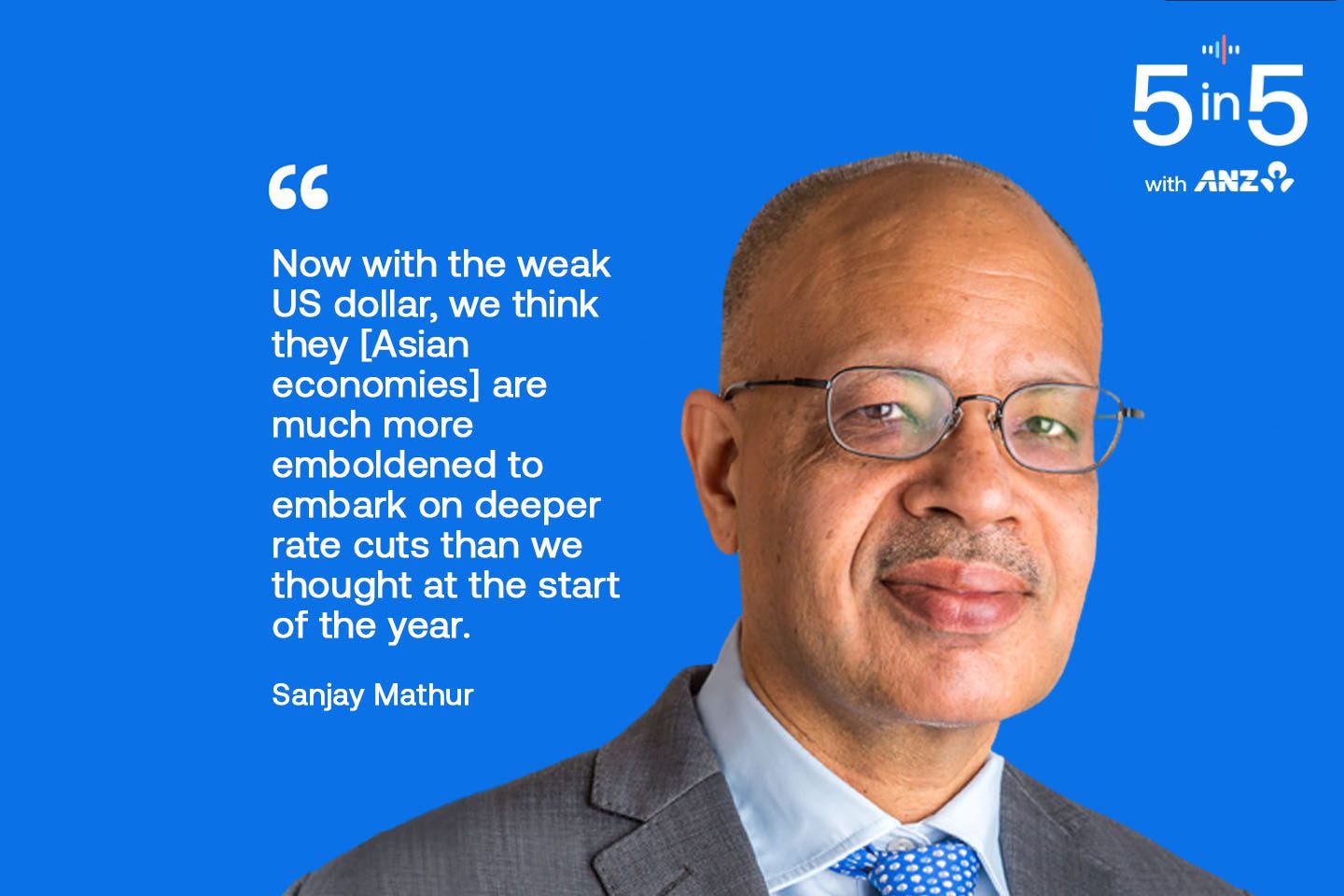US jobless claims unexpectedly fall, but markets brush it off. South Korea holds its interest rate. New Zealand’s trucks show production holding up, while data shows fewer migrants have been choosing to stay in New Zealand.
In our deep dive interview, ANZ Chief Economist for SouthEast Asia and India Sanjay Mathur highlights which Asian economies he’s keeping an eye on as we enter the third quarter.
5 things to know in 5 minutes:
US jobless claims fell 5,000 last week to 227,000, when economists had forecast a rise of 3,000 to 235,000. However, this year’s data included the July 4th holiday, so can be volatile, which saw markets brush aside the numbers. Meanwhile, ANZ Economist Bansi Madhavani says comments from Federal Reserve Bank of St Louis President Alberto Musalem, an FOMC member, reinforce that a cut this month is unlikely.
South Korea’s central bank kept its policy rate on hold at 2.5% yesterday. ANZ Economist Krystal Tan says the BoK is having to balance weak growth with rising financial stability concerns, particularly around the housing market.
This week’s decisions by the Reserve Bank of Australia and the Reserve Bank of New Zealand to hold their rates has shunted the Aussie/Kiwi cross around, says ANZ Head of FX Strategy Mahjabeen Zaman.
Monthly light and heavy traffic movements dropped a seasonally adjusted 1.3% in June, according to ANZ’s Truckometer index, reflecting lower activity. ANZ New Zealand Chief Economist Sharon Zollner says the annual changes in the index show how New Zealand’s economic growth drivers have been diverging.
New Zealand’s falling net migration rate appears to be stabilising - with a net 14,800 gain in the year to May. That is similar to April, but well down on the recent peak of 135,000 in the year to October 2023. ANZ Senior Economist Matthew Galt says that while the trend may be turning, new signs of weakness are showing through in data revisions.
Cheers,
Bernard.
PS: Catch you next week with analysis of any further US tariff letters sent over the weekend.













